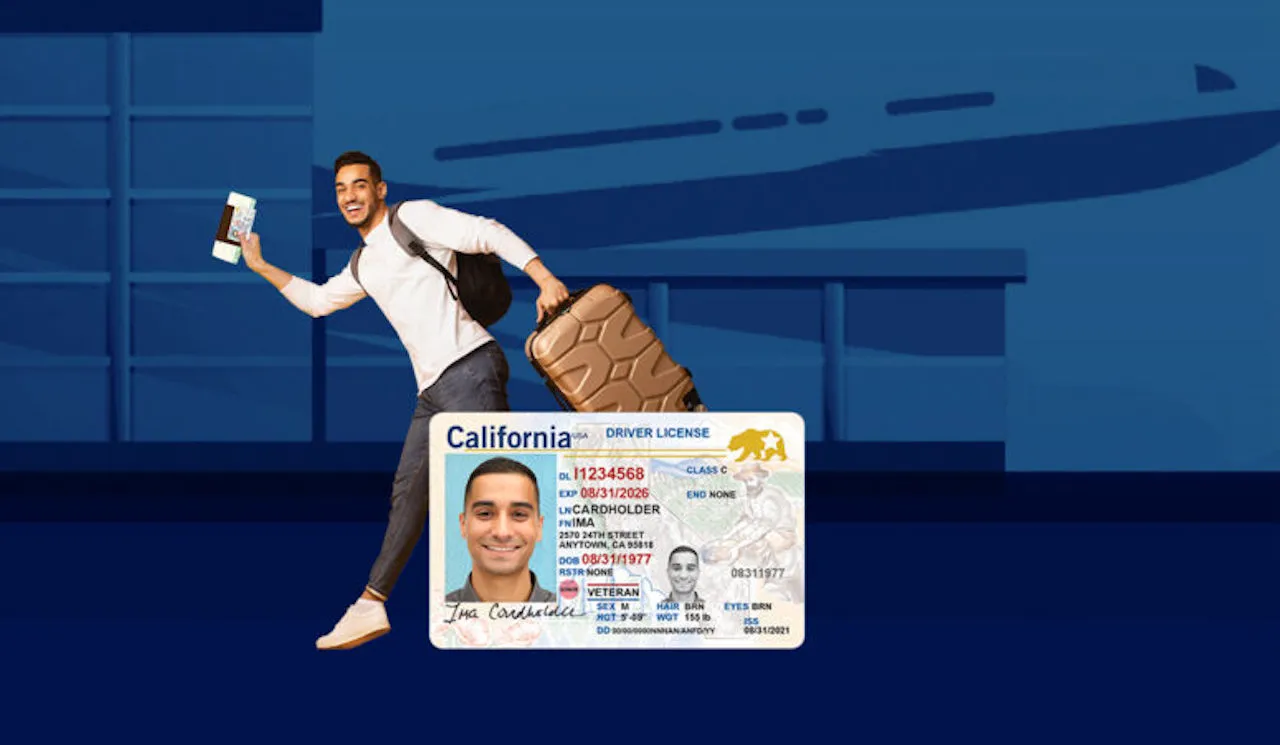Everything You Need To Know About The Status Of Your California Driver’S License
Having a valid driver’s license is critical for most California residents, but keeping track of your license status can be confusing. Getting a traffic ticket, failing to appear in court, or not paying certain fees on time can result in a suspended or revoked license before you even know it.
If you’re short on time, here’s a quick answer to your question: The status of your California driver’s license depends on factors like unpaid tickets and failures to appear in court. You can check your license status online through the DMV website.
In this comprehensive guide, we’ll walk through all the reasons your license may be suspended or revoked, how to check the status online or by mail, steps for reinstatement, and tips to avoid license suspensions in the first place.
Common Reasons for California License Suspensions and Revocations
Unpaid Traffic Tickets and Failing to Appear in Court
One of the most common reasons for license suspensions and revocations in California is the failure to pay traffic tickets or appear in court. When you receive a traffic ticket, it is important to take care of it promptly.
Failure to do so can result in the suspension of your driver’s license, and additional fines and penalties may be imposed.
DUI Offenses
Driving under the influence (DUI) is a serious offense in California, and it can lead to the suspension or revocation of your driver’s license. If you are convicted of a DUI, your license may be suspended for a certain period of time, and you may also be required to attend alcohol education programs or install an ignition interlock device in your vehicle.
Multiple DUI offenses can result in longer license suspensions or permanent revocations.
Too Many Negligent Operator Points
California uses a point system to track traffic violations on your driving record. If you accumulate too many points within a certain period of time, your license may be suspended. The number of points assigned to each violation varies, with more serious offenses resulting in higher point values.
It is important to drive safely and avoid accumulating too many points on your record.
Failing to Provide Proof of Insurance
California law requires all drivers to carry minimum liability insurance coverage. If you are unable to provide proof of insurance during a traffic stop or after an accident, your license may be suspended.
It is crucial to maintain valid insurance coverage and keep proof of insurance with you whenever you drive.
Medical Reasons
In some cases, a driver’s license may be suspended or revoked for medical reasons. This can happen if a person has a medical condition that impairs their ability to drive safely. Examples of medical conditions that may lead to a license suspension include seizures, certain vision impairments, and cognitive impairments that affect decision-making and reaction times.
It is important to note that this list is not exhaustive, and there may be other reasons for license suspensions and revocations in California. For more information on specific situations, it is recommended to visit the California Department of Motor Vehicles website or consult with legal professionals familiar with California traffic laws.
How to Check Your California License Status
Check Online through DMV Website
If you’re wondering about the status of your California driver’s license, checking it online through the DMV website is a quick and convenient option. Simply visit the official website of the California Department of Motor Vehicles and navigate to the “License Status” section.
You will be prompted to enter your personal information, such as your driver’s license number and date of birth, to access the details of your license status.
By checking your license status online, you can find out if your license is valid, suspended, or revoked. It’s important to regularly monitor your license status to ensure that you are driving legally and to avoid any potential issues or penalties.
If your license is suspended or revoked, the DMV website will provide information on the steps you need to take to reinstate your license.
Pro tip: Remember to keep your driver’s license number and personal information confidential to protect against identity theft.
Check by Mail
If you prefer a physical copy of your license status, you have the option to request it by mail. You can send a written request to the California Department of Motor Vehicles, including your full name, driver’s license number, and date of birth.
The DMV will then mail you a copy of your license status.
While checking your license status by mail may take longer than the online option, it can be a suitable alternative for those who prefer a hard copy or do not have access to the internet. Remember to include all the necessary information in your written request to ensure a smooth process.
Pro tip: Keep a photocopy of your written request and any correspondence with the DMV for your records.
Steps for Reinstating a Suspended or Revoked California License
If your California driver’s license has been suspended or revoked, there are certain steps you need to follow in order to reinstate it. These steps vary depending on the reason for the suspension or revocation, but here are some general guidelines to help you get started.
Pay Outstanding Fees and Fines
The first step in reinstating your California driver’s license is to pay any outstanding fees and fines that may be owed. This could include unpaid traffic tickets, court fines, or other financial obligations. It’s important to clear these debts before moving forward with the reinstatement process.
File SR-22 Insurance
If your license was suspended due to a DUI or other serious traffic violation, you may be required to file an SR-22 form with the California Department of Motor Vehicles (DMV). This form provides proof that you have the necessary liability insurance coverage.
It’s important to contact your insurance provider to file the SR-22 and ensure that it is submitted to the DMV.
Complete DUI Programs
If your license suspension was related to a DUI conviction, you will likely need to complete a DUI program as part of the reinstatement process. These programs are designed to educate individuals about the dangers of driving under the influence and provide tools for avoiding future offenses.
Depending on the severity of your DUI conviction, the program length may vary.
Pass Written and Road Tests
In some cases, you may be required to retake both the written and road tests in order to reinstate your California driver’s license. This is especially true if your license has been revoked due to multiple traffic violations or a serious offense.
It’s important to study and prepare for these tests to ensure that you pass and regain your driving privileges.
Reinstating a suspended or revoked California driver’s license can be a complex process, and it’s important to follow all the necessary steps. For more information and specific instructions, it is recommended to visit the official website of the California DMV at https://www.dmv.ca.gov/.
Tips for Avoiding a Suspended License in California
Having a suspended driver’s license can be a major inconvenience and can even affect your ability to work and carry out daily activities. To avoid this situation in California, it’s important to follow these tips:
Pay Tickets Immediately
One of the main reasons for a suspended license is failing to pay traffic tickets on time. To avoid this, make sure to pay your tickets promptly. Ignoring or delaying payment can lead to additional fines and penalties, and eventually result in a suspension of your license.
Appear for all Court Dates
If you receive a citation that requires a court appearance, it’s crucial to attend all scheduled court dates. Failing to appear can result in a warrant being issued for your arrest and can also lead to the suspension of your license.
Make sure to mark your calendar and be present for all required court proceedings.
Maintain Auto Insurance
Driving without proper auto insurance is not only illegal in California but can also lead to a suspended license. It’s important to maintain valid auto insurance coverage and carry proof of insurance with you at all times.
This will not only protect you in case of an accident but also help you avoid any legal consequences that could lead to license suspension.
Request DMV Hearing for Disagreements
If you receive a notice from the California Department of Motor Vehicles (DMV) stating that your license may be suspended, you have the right to request a hearing to contest the decision. It’s important to act quickly and follow the instructions provided in the notification to request a hearing.
Be prepared to present any evidence or information that may support your case.
Complete Negligent Operator Treatment Program
If you have accumulated too many points on your driving record or have been involved in a serious traffic violation, the DMV may require you to complete a Negligent Operator Treatment Program (NOTP). This program is designed to improve your driving behavior and reduce the risk of future violations.
By successfully completing the program, you may be able to avoid a license suspension or have your driving privileges reinstated.
By following these tips and staying up-to-date with your obligations as a driver, you can avoid the hassle and consequences of a suspended license in California.
Conclusion
Having your license suspended or revoked in California can lead to bigger legal problems and make life very difficult. By understanding the reasons licenses get suspended, checking your status regularly, and taking steps to reinstate ASAP, you can get back on the road legally.
With some attention to traffic laws and responsive action on tickets and notices, you can also avoid many license suspensions in the first place. Knowing your license status and rights for reinstatement will give you the power to resolve any issues promptly and responsibly.








